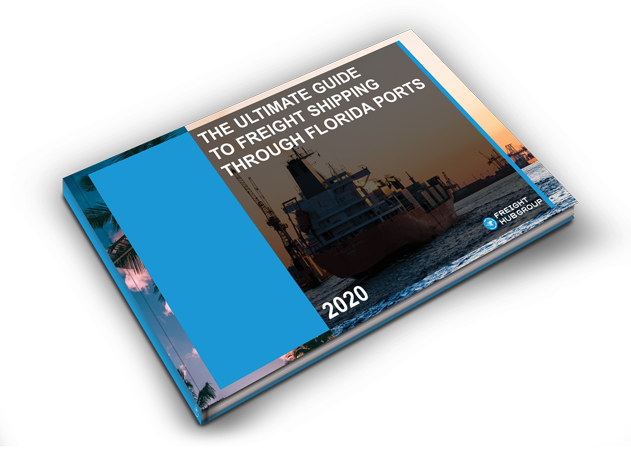Navigating the 5PL Model: A Comprehensive Guide to Fifth-Party Logistics
As the global supply chain becomes increasingly complex, the logistics models used to navigate this vast network are evolving too. Among these models, the Fifth Party Logistic Model, or 5PL, has emerged as a key player in supply chain management. In this article, we delve into the 5PL definition, highlight some well-known 5PL logistics companies, discuss the range of 5PL services, and draw distinctions between 1PL, 2PL, 3PL, 4PL, and 5PL.

5PL Definition
The 5PL model involves companies that aggregate demand from different 3PL and 4PL service providers to negotiate and obtain volume discounts from carriers. They rely on advanced technology and information systems to manage a network of supply chain activities and often work towards optimizing the entire logistics function. In a nutshell, they serve as the orchestrators of multiple logistics capabilities, often employing advanced analytics and optimization algorithms to provide cost-effective and efficient solutions.
Companies Specializing in 5PL Services
Several companies have specialized in offering 5PL solutions to businesses.
- Names like C.H. Robinson
- DHL Supply Chain
- Kuehne + Nagel
Are often cited as leaders in this sector. These companies offer a suite of services that leverage state-of-the-art technology to offer full-spectrum logistics solutions to their clients.
Range of 5PL Services
The services provided under this model often span the entire supply chain and include, but are not limited to, procurement, transportation, warehousing, and even advanced data analytics for supply chain optimization. Some 5PL providers also offer customized solutions that are industry-specific, such as pharmaceuticals, food and beverages, or automotive sectors. The high level of integration and coordination of these services allows companies to streamline their logistics, reducing costs and improving efficiency.
Making Distinctions: 1PL to 5PL
To better understand what sets 5PL apart, it’s important to know how it compares to the other logistics models.
- 1PL (First-Party Logistics): In this basic model, a company takes care of its own logistics, including transportation and warehousing.
- 2PL (Second-Party Logistics): Here, a company outsources some of its logistics activities to a specialized provider, usually related to transportation or warehousing.
- 3PL (Third-Party Logistics): The 3PL companies take on a broader range of logistics services, from transportation and warehousing to inventory management and even some basic procurement functions.
- 4PL (Fourth-Party Logistics): These companies manage and coordinate the activities of 3PL providers, often optimizing a specific part of a supply chain. Unlike 3PLs, 4PLs do not own assets like trucks or warehouses.
- 5PL (Fifth-Party Logistics): As we’ve discussed, 5PL companies focus on optimizing the entire supply chain through technology and analytics and work by aggregating demand from multiple parties.
The Added Value of 5PL
So why should a company consider moving up the logistics ladder to engage with a 5PL provider? Well, one of the main benefits lies in the advanced technology and analytics capabilities that these providers bring to the table. In today’s fast-paced, data-driven world, the insights derived from analytics can lead to better decision-making and more efficient operations. Moreover, because they aggregate demand, 5PL providers can often negotiate better rates, leading to cost savings.
Challenges and Considerations
While there are significant benefits to using a 5PL model, it’s also essential to consider the complexities. It requires handing over a great deal of control to a third party, so trust and reliability are crucial. Furthermore, this model is best suited for large corporations with complex supply chains that can truly benefit from the level of optimization offered by 5PLs.
To summurize
The 5PL model has added a new dimension to the logistics industry, offering high-tech, integrated solutions for complex supply chains. The technology-first approach, ability to negotiate better rates through aggregated demand, and the broad spectrum of services offered make it an appealing option for large businesses looking to optimize their operations. As the world of logistics continues to evolve, 5PL providers stand at the forefront of this change, offering solutions that could redefine how we think about supply chain management in the future.
Sources
- “Logistics and Supply Chain Management” by Martin Christopher
- C.H. Robinson Official Website
- DHL Supply Chain Official Website
- Kuehne + Nagel Official Website
- Journal of Business Logistics
Recent Posts
Watch our Podcast

THE ULTIMATE GUIDE TO FREIGHT SHIPPING THROUGH FLORIDA PORTS
When it comes to ocean freight shipping in Florida, there is a lot to know to ensure you follow the appropriate steps when shipping into and out of Florida Ports.
Just enter in your email address and receive your FREE E-Book in minutes!